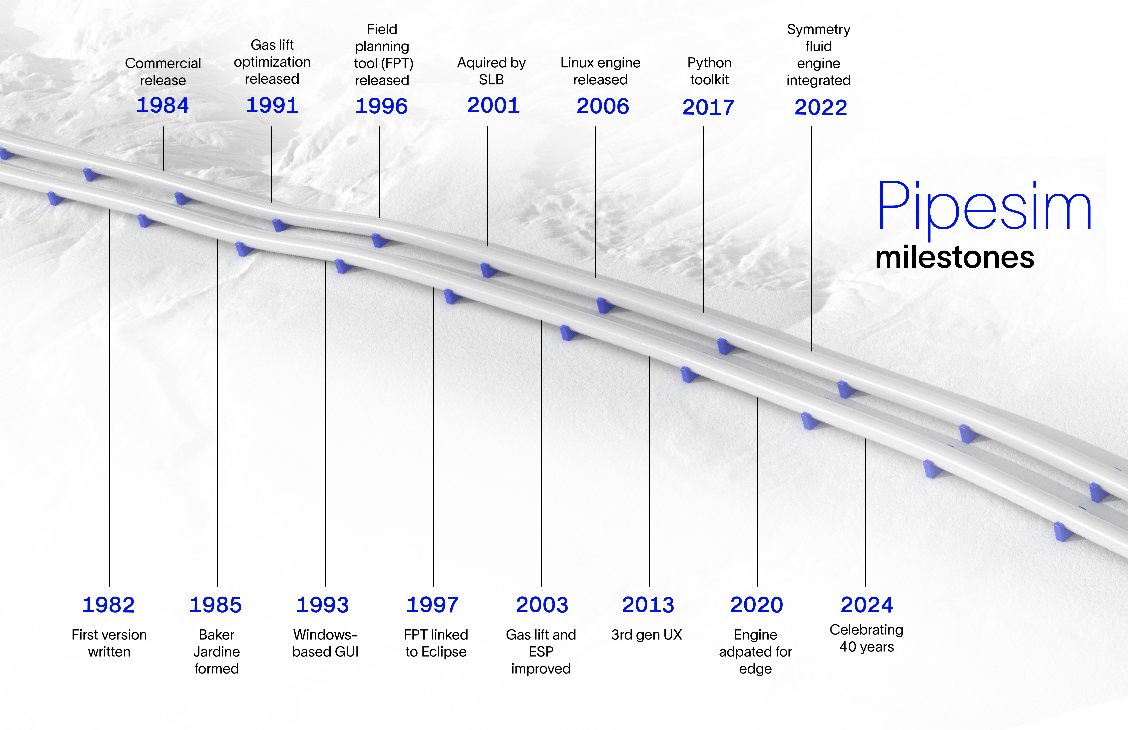A brief history of the Pipesim simulator

For 40 years, the Pipesim simulator has been continuously improved by incorporating not only the latest science in the three core areas of flow modeling—multiphase flow, heat transfer, and fluid behavior—but also the latest innovations in computing, and oil and gas industry technologies,
Pipesim™ steady-state multiphase flow simulator, initially developed by the London-based company Baker Process Systems (later Baker Jardine) traces its roots back to the visionary mind of Alan Baker. A seasoned engineer with Shell and Statoil, Baker's expertise in tackling the complexities of multiphase flow modeling was honed during the intense developmental phase in the North Sea in the late 1970’s and early 1980s.
The first release of the Pipesim simulator in 1984 marked a significant milestone as a steady-state multiphase pipeline simulator. In the subsequent year, the program’s capabilities were expanded by incorporating well modeling features. Then In 1991, Pipesim GOAL was released for gas lift optimization, followed by a robust network solver (PIPESIM-NET) in 1994, and PIPESIM FPT (a field planning tool) in 1996 By the mid-1990’s the Pipesim simulator was well established in the global market, with satellite offices in Houston, Caracas (Venezuela), and Villahermosa (Mexico).
Baker Jardine was then acquired by SLB in April 2001. This transition brought the Pipesim simulator into widespread adoption within SLB, emerging as the engine of choice powering various well modeling applications. The years following the acquisition witnessed substantial global growth and noteworthy technical advancements. These have included the introduction of a plethora of advanced multiphase flow models, and advanced well modeling, involving intelligent completions and complex flowpaths in downhole networks.
Today, the Pipesim simulator stands as an indispensable tool, relied upon by more than 3000 engineers across over 290 companies worldwide. It plays a pivotal role in the design, operation, and optimization of well and pipeline networks.
The evolution of the Pipesim simulator over the past four decades is a testament to the collaborative efforts of engineers and developers, the dynamic landscape of computing technology, and, most significantly, the daily utilization by operators and engineering companies and their critical input into feature requirements. As the Pipesim simulator continues to shape the landscape of multiphase flow modeling, its journey is not only a narrative of technological evolution but also a story of the individuals and organizations who contribute to its ongoing success.

